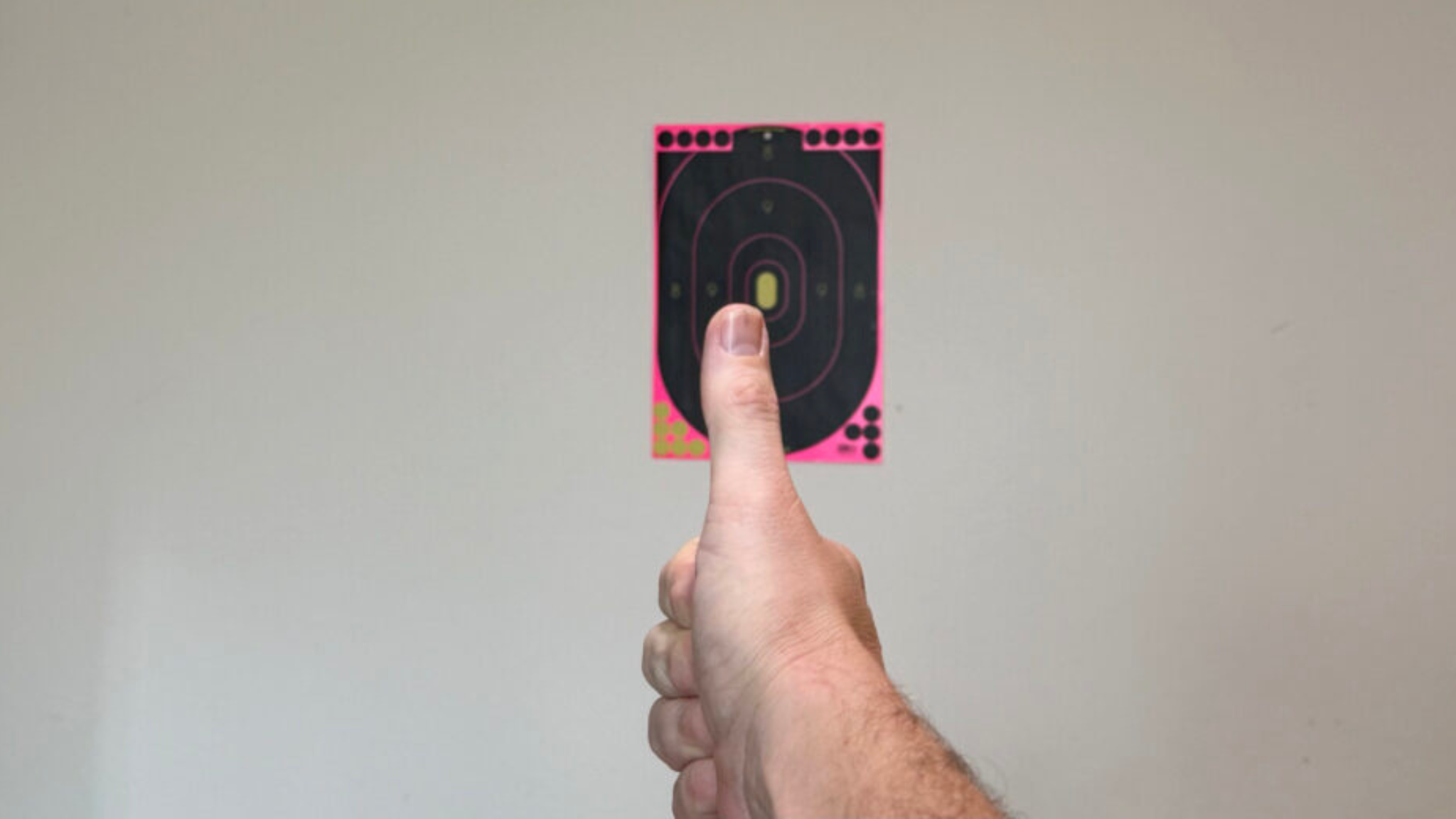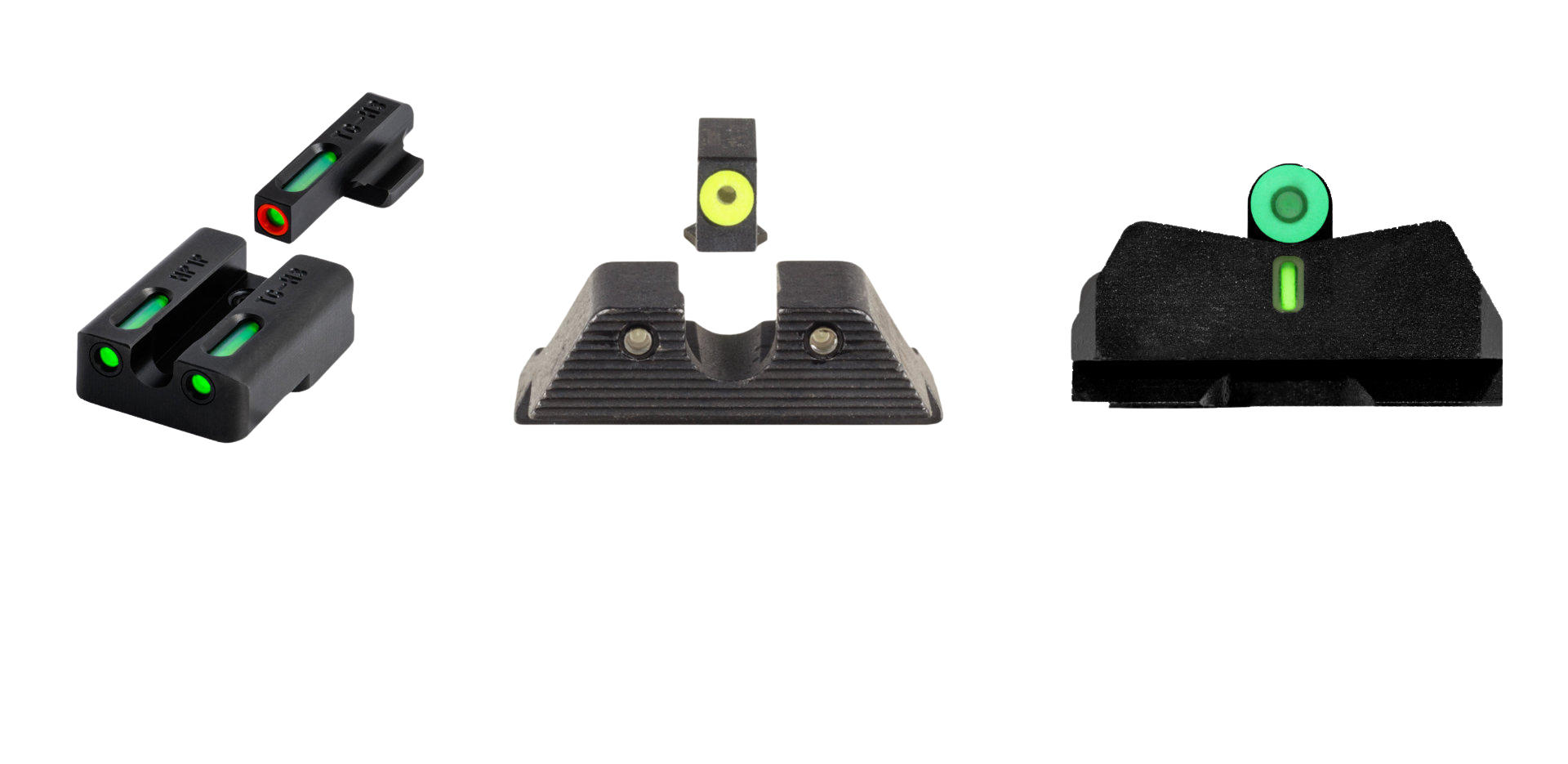
Let’s get right to it. If you’re an experienced shooter who’s suddenly struggling to see your sights, this guide is for you.
If any of those points sounded familiar, then you and I have a lot in common. We’ve spent our lives being told one thing over and over: “Focus on the front sight.” It’s the gospel of marksmanship. But if you’ve noticed that gospel isn’t working for you anymore, you’re not alone.
Let me show you something that will probably feel very familiar. Go ahead and make a fist, stick your thumb up, and hold it out at arm’s length. Now, really stare at your thumbnail. Try to see every detail, every line, every imperfection. Got it? Okay, keep looking right there, but try to tell me what’s in the background.
It’s just a fuzzy mess, isn’t it? That, my friend, is exactly what’s happening on the firing line.
This isn’t a sign that you’re losing your skill. It’s a sign that you’re getting older, and there’s a medical reason for it called Presbyopia. It’s a completely normal part of aging that happens to most folks over 50. The lens in your eye starts to get a little harder and less flexible, making it difficult to shift focus between things that are close, like your sights, and things that are far, like your target.

Look, I live this reality every day. My dad and I both wear progressive lenses, and it feels like we’re playing a frustrating, no-win game at the range. If we put our glasses on, the front sight turns into a fuzzy blob. If we take them off, the sight is clear, but the target disappears into a watercolor painting. Sound familiar?
The truth is, that “front sight focus” technique we all mastered was built on younger eyes that could perform incredible optical gymnastics. They could snap from near to far and back again in an instant. Our eyes just don’t have that flexibility anymore, so trying to force them is a recipe for frustration and wide shot groups.
Here’s the good news: we’re going to solve this today. The solution is straightforward. You either change your point of focus, or you change your sights to make them easier for your eyes to find.
Here’s the good news: we’re going to solve this today. The solution is straightforward. You either change your point of focus, or you change your sights to make them easier for your eyes to find.
Instead of fighting your eyes, work with them. Use Target Focus.
Pick a spot on your target and just stare at it. Let it be the only thing in your field of vision. Then, just bring your handgun up into your line of sight. Your sights will appear as a blurry silhouette, and that’s perfectly fine. Your brain is an amazing thing; it will instinctively center that blurry shape over the spot you’re focused on. This isn’t a new trick; it’s a proven combat shooting technique taught to Allied special forces during WWII by legends like Fairbairn and Sykes. In a real defensive situation, your focus will be on the threat, not your sights—this just trains you to use that natural instinct effectively.
For a situation that’s right on top of you—across a room or closer—you won’t have time for even a blurry sight picture. In this case, use the whole gun as your sight. Bring the firearm up, lock your wrist, and put the blocky shape of the slide right on the center of the target. This works because of
proprioception—your brain’s natural ability to know where your hand is pointing, even without looking directly at it.

If you want a more permanent fix, let’s talk about a few wise investments. We’re not bolting “tacticool” junk onto our guns; we’re using simple, effective fixes that solve a real problem.
My dad had this issue with his Springfield XD. The stock sights were just smudges to him. He had a set of
TruGlo TFO sights installed, which combine bright fiber optics for the daytime with glowing tritium for the night. The difference for him was night and day. Here are a few reliable options:

I know what some of you are thinking: “Just get a red dot!” And you’re right, a red dot is a fantastic solution. My dad has one on his S&W Equalizer, and at 80, it’s perfect for him. But many of us value the bomb-proof reliability of simple iron sights and are skeptical of adding batteries and electronics to a defensive tool. A red dot is a great option, but it isn’t the only option.
You don’t have to give up or accept declining accuracy. The solution is straightforward: change where you look, or change what you’re looking at.
By the way, if you decide upgrading your sights is the right path for you, sights like the TruGlo TFOs are a fantastic all-in-one solution. For those who prioritize pure speed, the XS Big Dots are an excellent choice that many experienced shooters swear by.
What have you tried to solve the blurry sight problem? Share your own tips and experiences in the comments below. We can all learn from each other.
Next week, we’ll talk about proven skills you can use to help develop your target focus and make these techniques second nature.
It’s frustrating when decades of skill are undermined by something as simple as blurry sights. The good news is, you don’t have to accept it. While target-focused shooting is a critical skill, upgrading your gear can feel like getting a new pair of prescription glasses for your firearm. Here are some of the most effective and trusted solutions I’ve found for making your sights pop and your training more productive.
(A quick heads-up: The links below are affiliate links. If you decide to buy something, I may earn a small commission at no extra cost to you. I only recommend gear I trust and believe in.)
High-Visibility Fiber Optic Sights: These sights gather ambient light to create a single, bright dot. This makes your front sight much easier to pick up quickly against a target, especially in daylight. https://amzn.to/4n70djd
Tritium Night Sights: Essential for low-light or home defense situations. These sights use tritium to glow on their own, giving you a clear aiming point when standard sights have disappeared in the dark. No batteries are needed. https://amzn.to/3Ij0Mra
XS Big Dots: This system is designed for speed at close distances. The large front dot is extremely fast to acquire under stress. The principle is simple: just put the big dot on the target. https://amzn.to/46a9LUH
High-Contrast Targets: These targets make it easy to see your hits from a distance. The high-contrast color provides instant feedback so you can make adjustments and get more out of your range time. https://amzn.to/4n6D4xj
| Dave Pitcher, who’s been shooting and handling firearms since 1988. In addition, Dave’s served 12 years in the Army Reserve with deployments to Qatar and Afghanistan. This article is for educational purposes only and is not legal advice. Laws, rosters, and Glock’s discontinued list can change. Last updated: October 30, 2025. |
Join thousands of Everyday Gun Owners learning real-world preparedness, without the hype.
